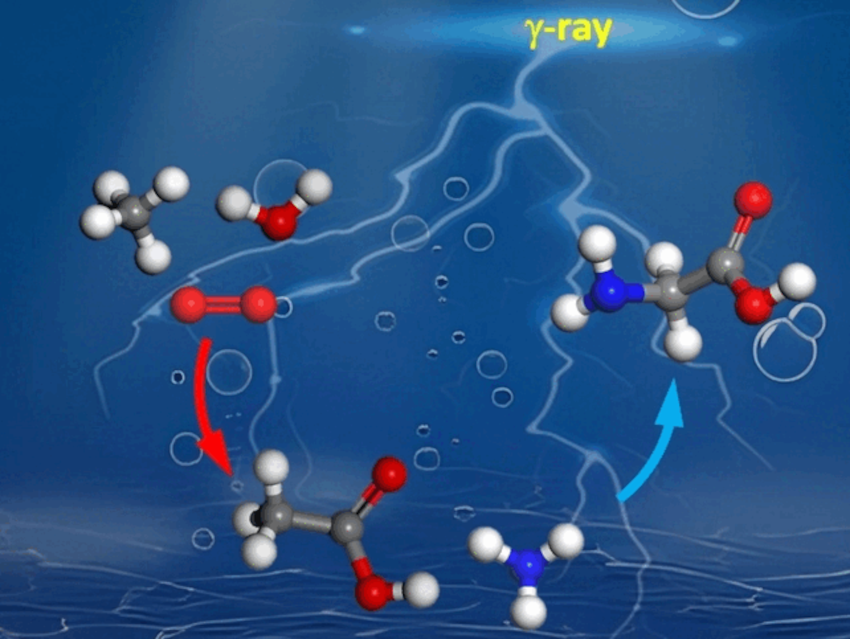Weixin Huang, University of Science and Technology of China, Hefei, and colleagues have found that γ radiation can convert methane into a wide variety of products at room temperature, including hydrocarbons, oxygen-containing molecules, and amino acids. This type of reaction could play an important role in the formation of complex organic molecules in the universe—and possibly in the origin of life. These transformations could also open up new strategies for the industrial conversion of methane into high value-added products under mild conditions.
With this work, the team contributed to the fundamental understanding of molecular formation in the early universe. “γ rays—high-energy photons commonly existing in cosmic rays—and unstable isotope decay, provide external energy to drive chemical reactions of simple molecules in the icy mantles of interstellar dust and ice grains,” states Huang. “This can result in more complex organic molecules, presumably starting from methane, which is widely present throughout the interstellar medium.”
γ-Ray Driven Conversions
Although higher pressures and temperatures reign on Earth and on planets in the so-called habitable zone, most studies of cosmic processes are only simulated under vacuum and at extremely low temperatures. In contrast, the team studied the reactions of methane at room temperature in the gas and aqueous phases under irradiation with a cobalt-60 emitter.
The composition of the products varies depending on the starting materials. Pure methane reacts—with very low yield—to give ethane, propane, and hydrogen. The addition of oxygen increases the conversion, resulting mainly in CO2 as well as CO, ethylene, and water. In the presence of water, aqueous methane reacts to give acetone and t-butyl alcohol; in the gas phase, it gives ethane and propane. When both water and oxygen are added, the reactions are strongly accelerated. In the aqueous phase, formaldehyde, acetic acid, and acetone are formed.
If ammonia is also added, acetic acid forms glycine, an amino acid also found in space. “Under γ radiation, glycine can be made from methane, oxygen, water, and ammonia, molecules that are found in large amounts in space,” says Huang.
The team developed a reaction scheme that explains the routes by which the individual products are formed. Radicals like ∙O2− and ∙OH play an important role in this. The rates of these radical reaction mechanisms are not temperature-dependent and could, thus, also take place in space.
The Role of Interstellar Dust
In addition, the team was able to demonstrate that various solid particles that are components of interstellar dust—silicon dioxide, iron oxide, magnesium silicate, and graphene oxide—change the product selectivity in different ways. The varied composition of interstellar dust may, thus, have contributed to the observed uneven distribution of molecules in space.
Silicon dioxide leads to a more selective conversion of methane to acetic acid. Huang explains, “because γ radiation is an easily available source of energy, this could be a new approach for using methane as a carbon source that can be efficiently converted into value-added products under mild conditions—a long-standing challenge for industrial synthetic chemistry.”
- γ‐Ray Driven Aqueous‐Phase Methane Conversions into Complex Molecules up to Glycine,
Fei Fang, Xiao Sun, Yuanxu Liu, Zhiwen Jiang, Mozhen Wang, Xuewu Ge, Weixin Huang,
Angew. Chem. Int. Ed. 2024.
https://doi.org/10.1002/anie.202413296



